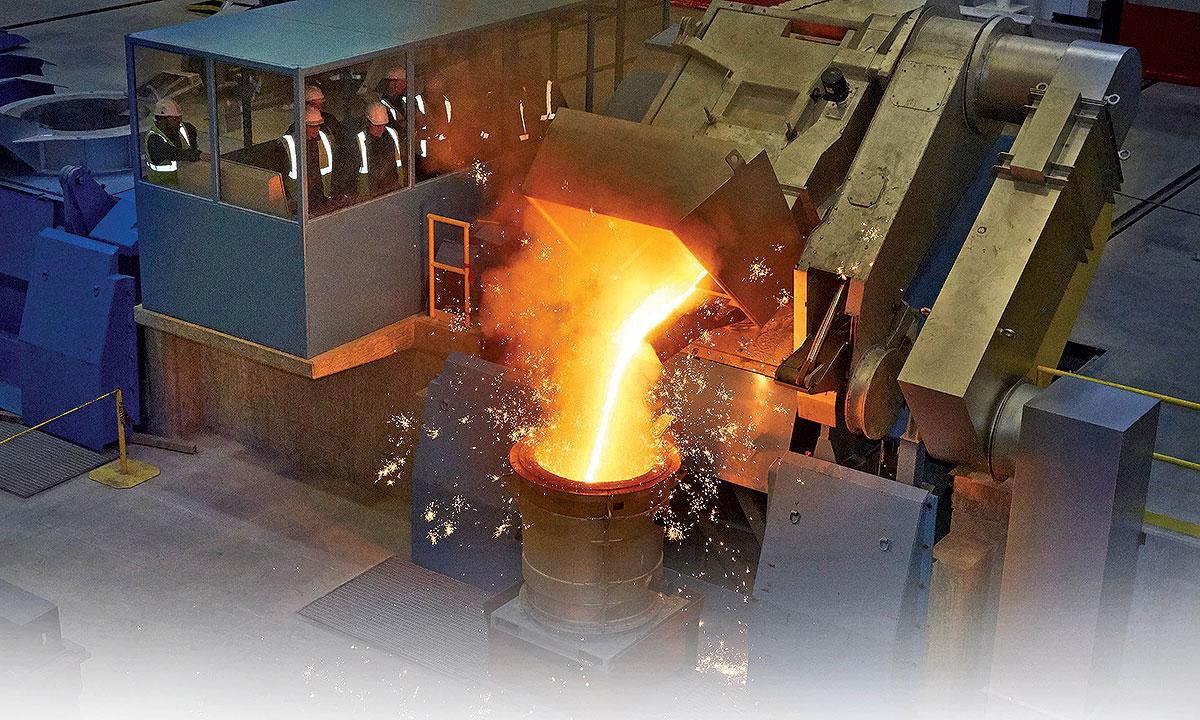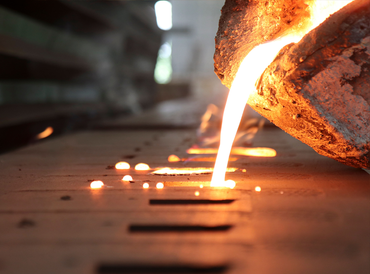Beginner-Friendly Guide to Aluminum Foundry Processes
Wiki Article
Comprehending Metal Casting Processes: Innovations and Fads in the Foundry Sector
The foundry industry is experiencing considerable changes driven by technical developments. Innovations such as 3D printing and expert system are reshaping metal casting processes, enhancing efficiency and precision. Sustainable methods are acquiring traction, stressing the value of ecological obligation. Additionally, the intro of sophisticated products and automation is improving total casting quality. These developments suggest an essential change in the industry, questioning about future instructions and ramifications for producers.Developments in 3D Printing for Metal Casting
Recent improvements in 3D printing modern technology have significantly changed the landscape of metal casting. The integration of additive production methods has actually enabled the quick manufacturing of facility patterns and mold and mildews that were impossible or previously challenging to accomplish with typical approaches. By utilizing materials such as sand and metal powders, producers can produce detailed geometries that boost design versatility and reduce material waste. This development not only speeds up the prototyping procedure however likewise enables the personalization of elements tailored to details applications.
3D printing assists in much shorter lead times, which is crucial in industries needing quick turnaround for parts. The technology additionally sustains the manufacturing of light-weight frameworks, thereby enhancing power performance in final result. Consequently, the foundry industry is observing a shift towards even more lasting practices, driven by the efficiency and precision provided by these modern-day 3D printing techniques in steel casting processes.
The Role of Expert System in Precision Manufacturing
As sectors progressively embrace innovative production innovations, artificial intelligence (AI) is playing a critical duty in improving precision manufacturing processes. AI formulas evaluate substantial datasets to recognize patterns and enhance manufacturing criteria, causing boosted precision and performance. In metal casting, AI aids in predictive upkeep, minimizing downtime by forecasting equipment failings before they take place.Moreover, AI-driven simulations make it possible for manufacturers to design the casting procedure, refining layouts and reducing problems. Machine learning techniques boost top quality control by discovering anomalies in real-time, thus making sure that only items fulfilling rigid specifications continue with the assembly line.

Lasting Practices in the Foundry Sector
Sustainability has actually emerged as a crucial focus in the foundry industry, prompting suppliers to take on practices that minimize environmental impact while keeping productivity - Aluminum Foundry. One noticeable approach includes the recycling of materials, particularly steels, which considerably lowers waste and power consumption. Foundries are progressively implementing closed-loop systems, enabling for the reuse of sand and various other casting materials, thereby reducing the requirement for virgin sourcesIn addition, energy-efficient innovations, such as electrical heaters, are acquiring grip, as they reduced greenhouse gas emissions compared to standard methods. Many foundries are discovering the usage of eco-friendly finishes and eco-friendly binders to lower harmful byproducts. Employee training on lasting methods has actually additionally come to be important, fostering a society of environmental duty within organizations. Read Full Article Overall, these lasting methods not only contribute to ecological conservation but also boost the long-term stability of the foundry market in a significantly eco-conscious market.
Technologies in Products for Improved Casting Quality
With the constant advancement of the foundry industry, advancements in materials have actually ended up being important for enhancing casting top quality. Advanced alloys and composite materials are progressively being used to enhance mechanical residential properties and minimize flaws in castings. These products usually use superior strength-to-weight ratios and boosted resistance to corrosion and wear, addressing the needs of modern-day applications.Furthermore, the unification of nanomaterials is acquiring traction, enabling finer microstructures that bring about improved surface area finishes and dimensional precision. Metal Casting. 3D printing modern technologies additionally contribute in producing complex geometries with minimal waste, allowing making use of customized products that were previously testing to cast
Additionally, the advancement of environmentally friendly binders and ingredients adds to sustainable methods while maintaining top notch results. Jointly, these technologies not only enhance the efficiency of cast products however additionally line up with the industry's change in the direction of sustainability and efficiency.
Automation and Robotics in Metal Casting Processes
Automation and robotics are revolutionizing steel casting processes by streamlining operations and boosting precision. In modern foundries, robotic systems are employed for jobs such as mold handling, pouring, and ending up, substantially lowering human treatment. This not just decreases the threat of crashes yet likewise guarantees regular high quality in manufacturing.Automation modern technologies, such as computer system numerical control (CNC) machines, assist discover here in intricate layouts and complex geometries that were previously testing to accomplish. In addition, real-time data analytics enable producers to enhance and monitor processes efficiency continuously.
The combination of automation results in increased productivity and effectiveness, allowing shops to fulfill expanding market needs while minimizing lead times. As the market embraces these improvements, the labor force is also evolving, needing new abilities to run and preserve innovative equipment. In general, the adoption of automation and robotics is a critical fad forming the future of metal casting processes.
Regularly Asked Concerns
What Is the Background of Metal Casting Strategies?
Metal casting techniques date back to old worlds, with proof of bronze casting in Mesopotamia around 3000 BCE. Over centuries, approaches progressed significantly, including developments in products and modern technology, shaping contemporary industrial techniques.How Does Metal Casting Effect the Setting?
Metal casting substantially affects the atmosphere via energy consumption, emissions, and waste generation. Nevertheless, developments in lasting practices and innovations intend to minimize these effects, advertising more environmentally friendly methods within the industry.What Security Measures Are Critical in Factories?

What Are Typical Problems in Metal Casting Products?
Common problems in metal casting products consist of porosity, shrinking, misruns, cold shuts, and surface blemishes. These issues arise from elements such as improper temperature level control, poor mold and mildew style, and contamination throughout the casting process.Exactly How Do Foundries Ensure Top Quality Control in Casting Processes?
Factories apply strenuous high quality control actions through routine examinations, standardized screening, procedure surveillance, dig this and adherence to market requirements. These methods help recognize flaws early, ensuring the honesty and integrity of the last casting products.Innovations such as 3D printing and man-made knowledge are reshaping steel casting processes, improving performance and precision. Recent innovations in 3D printing technology have considerably changed the landscape of steel casting. Automation and robotics are reinventing steel casting procedures by enhancing and enhancing operations precision. Metal casting methods date back to old worlds, with proof of bronze casting in Mesopotamia around 3000 BCE. Usual defects in metal casting items consist of porosity, contraction, misruns, cold shuts, and surface imperfections.
Report this wiki page